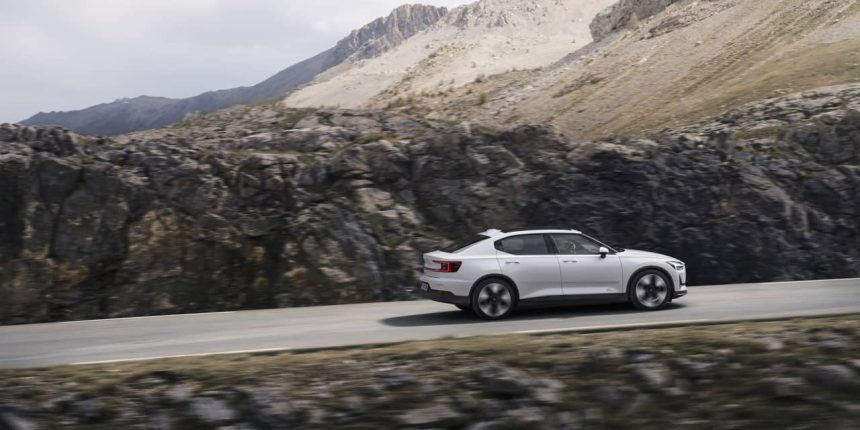Cherry Creek is a very chic high-end shopping and dining district in Denver, and it’s been home to a Polestar showroom since late 2020. Speaking from there earlier this week, Gregor Hembrough, head of Polestar North America, said that the brand’s goal is to sell more than 60,000 of its luxury electric sedans and SUVs globally this year, up from 51,000 in 2022.
The strategically located shops are part of the plan.
“We’re searching for high-end boutique areas like Cherry Creek. And we are building small spaces—we don’t need 8,000 square feet or 8 acres of property,” Hembrough says. The Denver showroom has room for a few cars, plus tools such as leather samples and external color ranges for ordering the cars their own way.
Polestar has 31 such locations in North America, along with 32 service points, Hembrough says. New stores are set to open near Westport, Conn., and other areas in the top 25 EV sales hot spots along the coasts and, increasingly, in the Midwest, too. Las Vegas is coming, plus Salt Lake City, and Pleasanton, Calif. (near San Francisco).
Selling cars this way, without a traditional large-scale dealer network, has become standard for EV startups. “We offer no-haggle pricing and the ability to deliver the car right to your door,” Hembrough says. “Our customers really appreciate that.”
In Denver, the company introduced the 2024 version of the Polestar 2 compact hatchback, with enhanced power and a new configuration for the single-motor version—with rear-wheel instead of front-wheel drive. The single-motor version of the car, selling for US$49,900, will have 320 miles of range. John Quinn, product launch manager, says that avoiding range anxiety is key for Polestar customers. “Three hundred miles is my favorite number in terms of range,” Quinn says. “We worked hard to achieve it and exceed it.”
The 2024 long-range single-motor Polestar 2 will have an 82-kilowatt-hour battery and a 220-kilowatt electric motor producing 299 horsepower, up 68 horsepower from the previous model. Torque is 361 pound-feet (a massive 118 pound-feet improvement). The earlier version of the car took seven seconds to 60 miles per hour, and now it’s 5.9. Charging improved 20%, at up to 205 kilowatts. This version of the car offers plenty of power and the long range is certainly attractive.
The dual-motor version of the car will have all-wheel drive but with a rear-wheel bias, a 78-kilowatt-hour battery from new supplier CATL, 421 horsepower (up 13 from the previous model), and 546 pound-feet of torque (up 59 pound-feet). The dual-motor can reach 60 mph in 4.3 seconds.
The car’s range is 276 miles (up 16). With the available performance pack (US$5,500, adding four-piston Brembo brakes, launch control, and Ohlins manually adjustable shocks), horsepower increases to 455, but there’s some minor range loss (to 247 miles).
Both versions of the car, weighing between 4,429 and 4,641 pounds, have a 127-mph top speed. On Polestar 2, an animal welfare-checked Nappa leather from Bridge of Weir is an extra US$4,000, metallic paint is US$1,250, and 20-inch alloy wheels are US$1,300. All Polestar 2s can tow 2,000 pounds. They offer excellent storage under the powered rear hatch, with an additional cubic foot below the trunk floor. The rear cargo area is 14.3 cubic feet with seats up, and the total with them folded is 38.7 cubic feet.
The Polestar 2’s cabin is inviting and understated, with leather, a variety of fabrics, and high-quality plastics in a Scandinavian-modern style. The test car had a big front-to-back panoramic glass roof. The big 11.2-inch touch-sensitive center screen dominates the cockpit, and offers easy-to-understand controls running under Google’s Android Automotive OS system.
A full lineup of Polestars is coming—one model a year Polestar 3, a luxury SUV, is now on sale for US$83,900. Polestar 4, a sporty SUV with 300-miles-plus range, is already taking orders in China. It will come to the U.S. in 2024, priced around US$60,000. Polestar 5 is a luxury sport GT four-door, coming in 2025 and priced at US$100,000. And Polestar 6 is a luxury four-seat roadster, with a US$150,000 price tag, available in 2026.
Polestar is still a very young company, launched as a Swedish racing enterprise in 1996, and evolving into the production of tuned versions of Volvo models. Volvo acquired it in 2015, and China-based Geely, the parent company, spun it off as a separate division making high-end electrics. “They realized that EVs were the future,” Hembrough says.
Read the full article here




